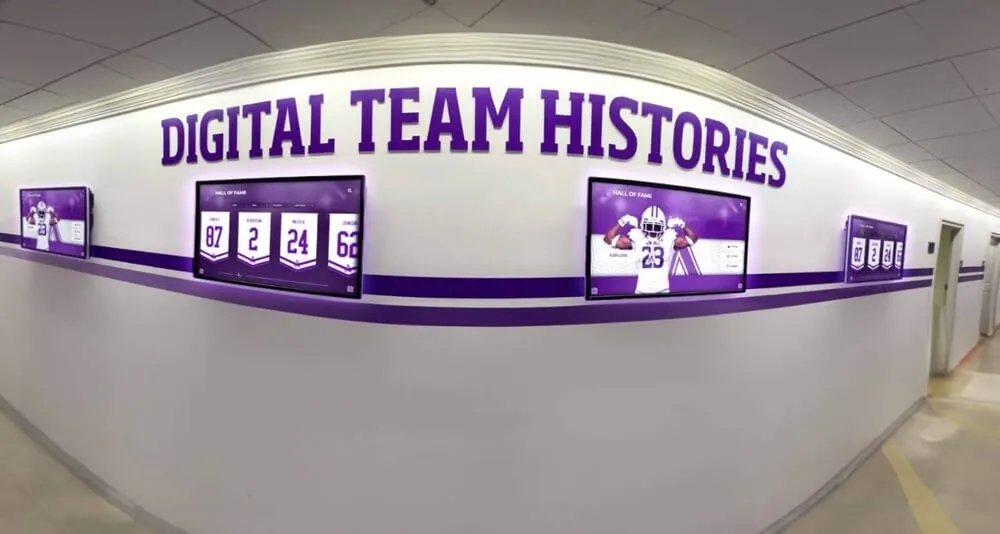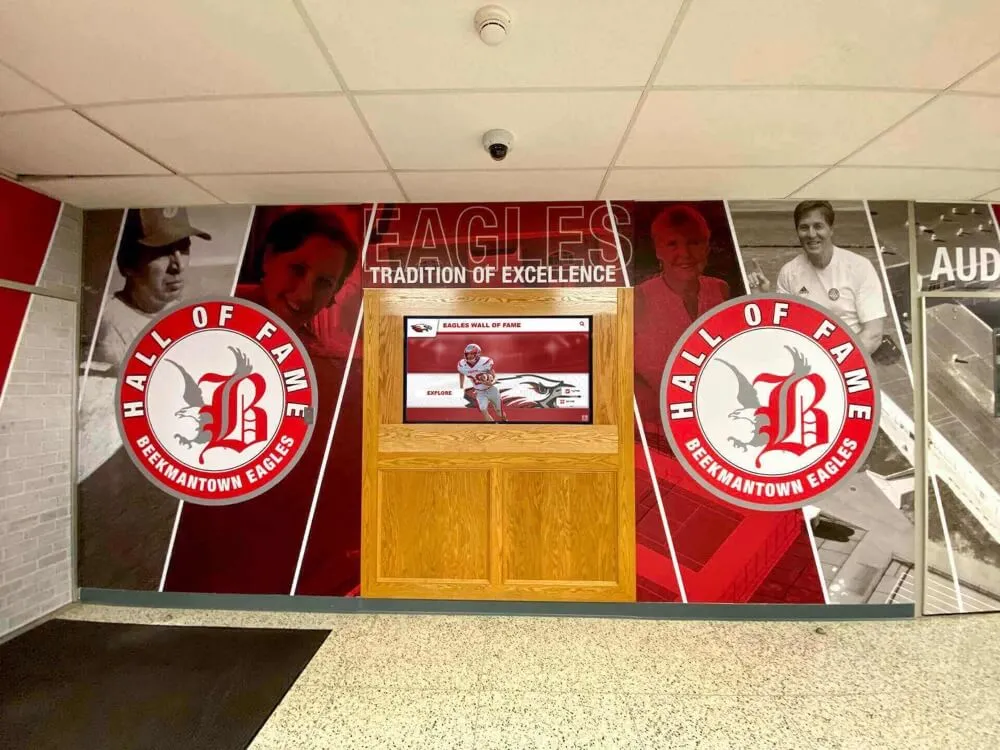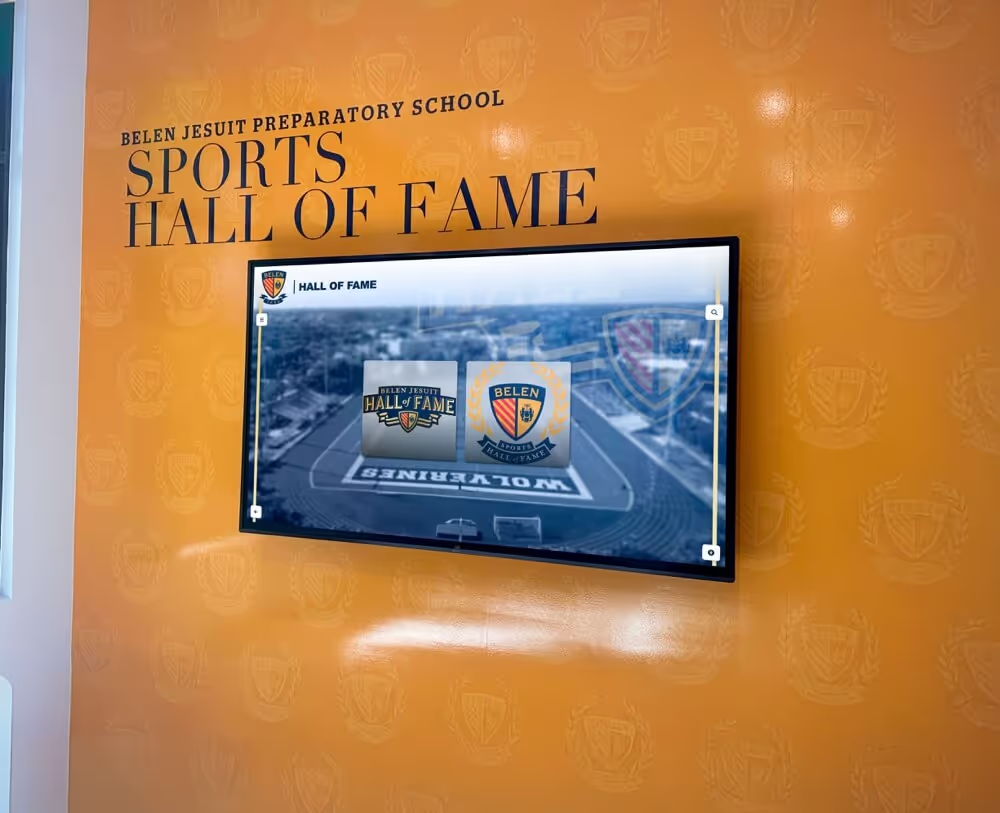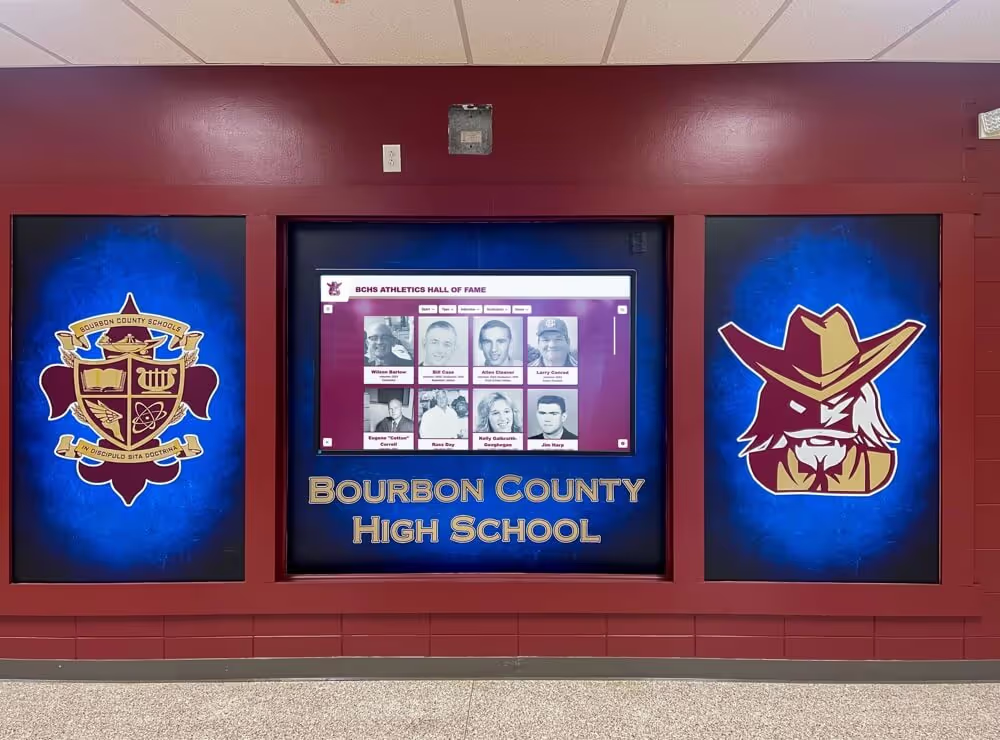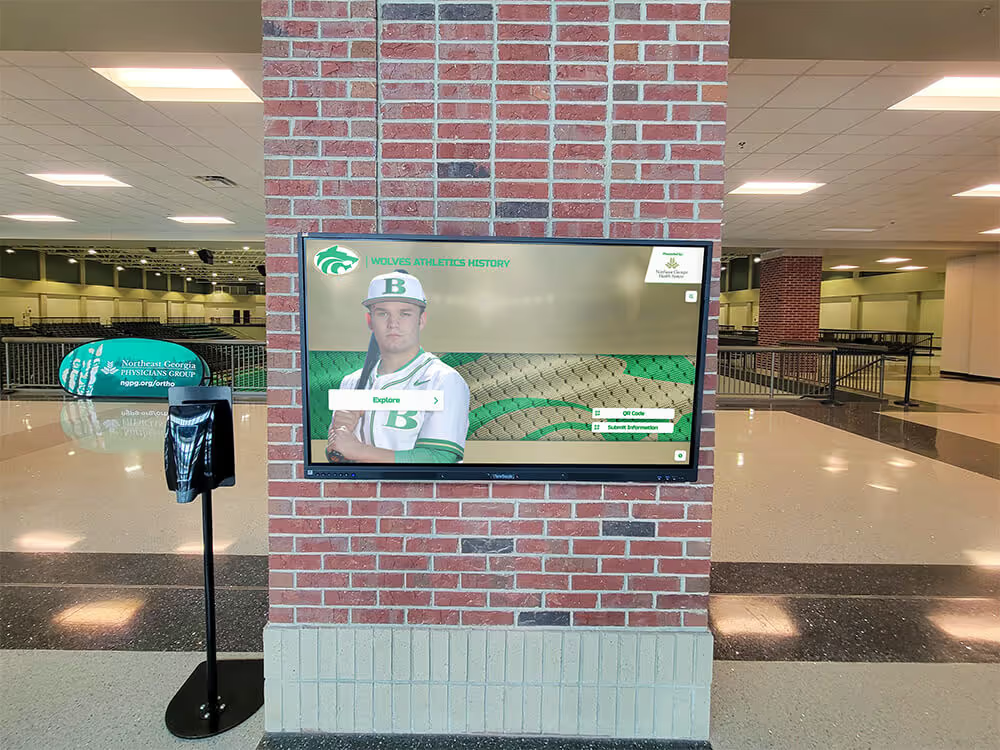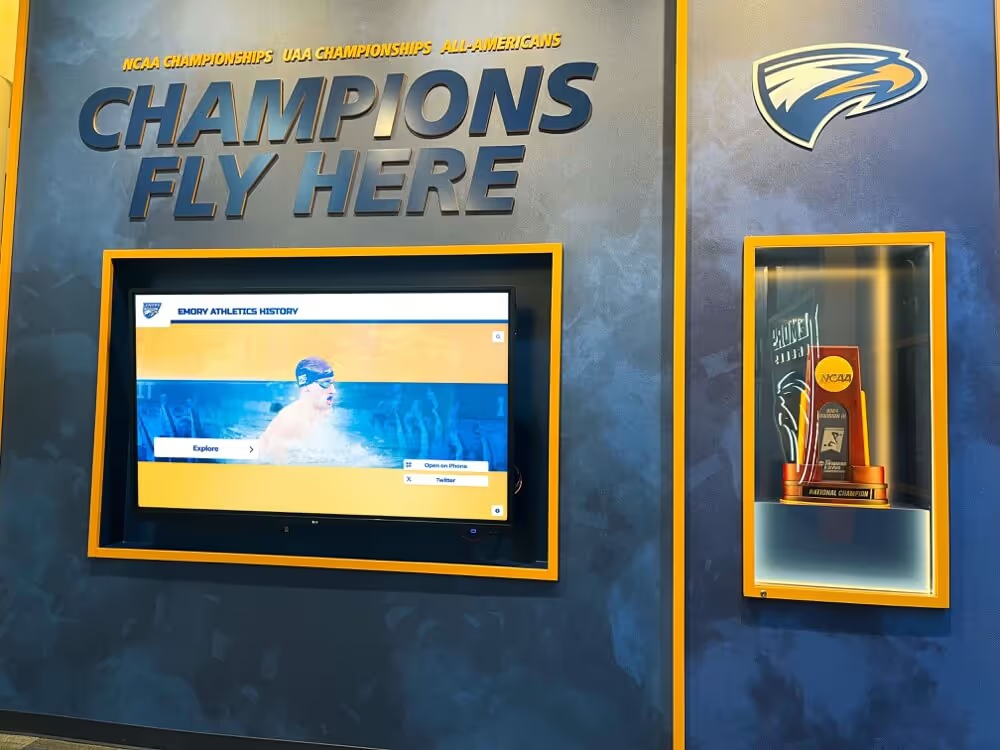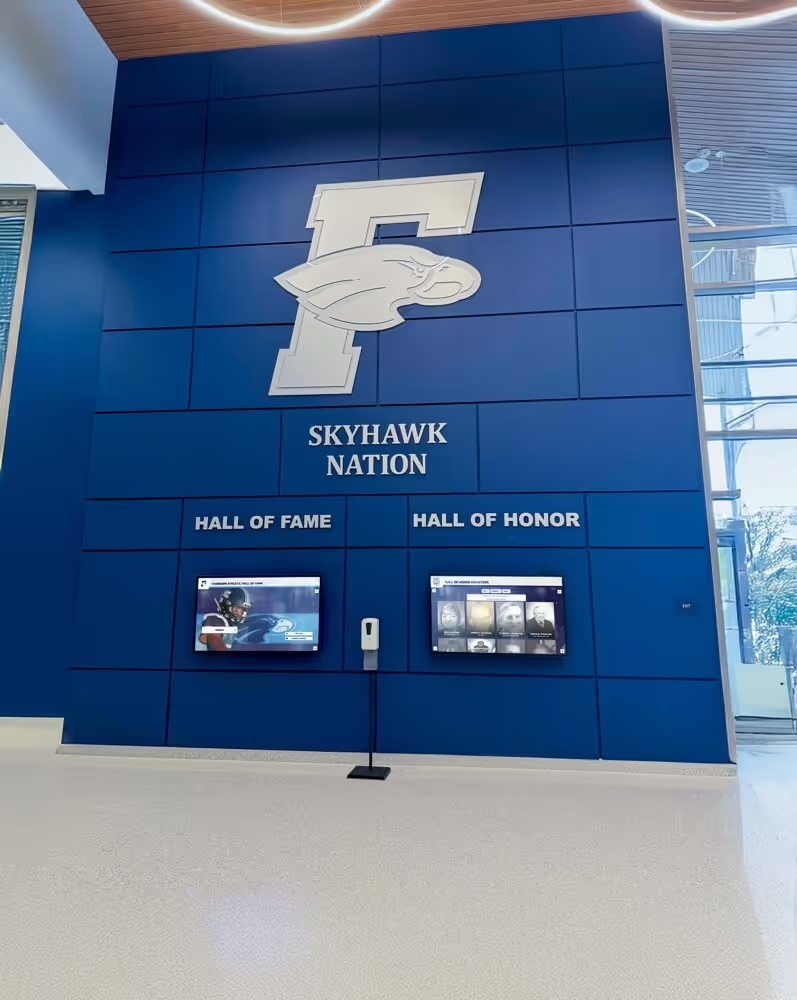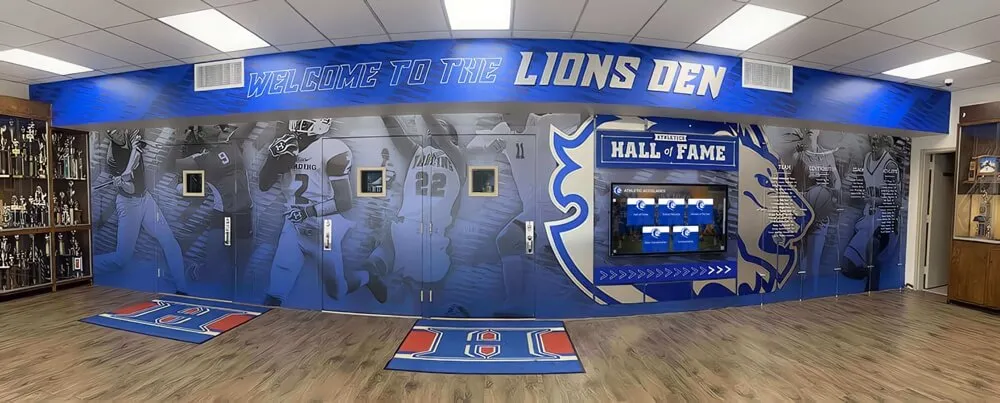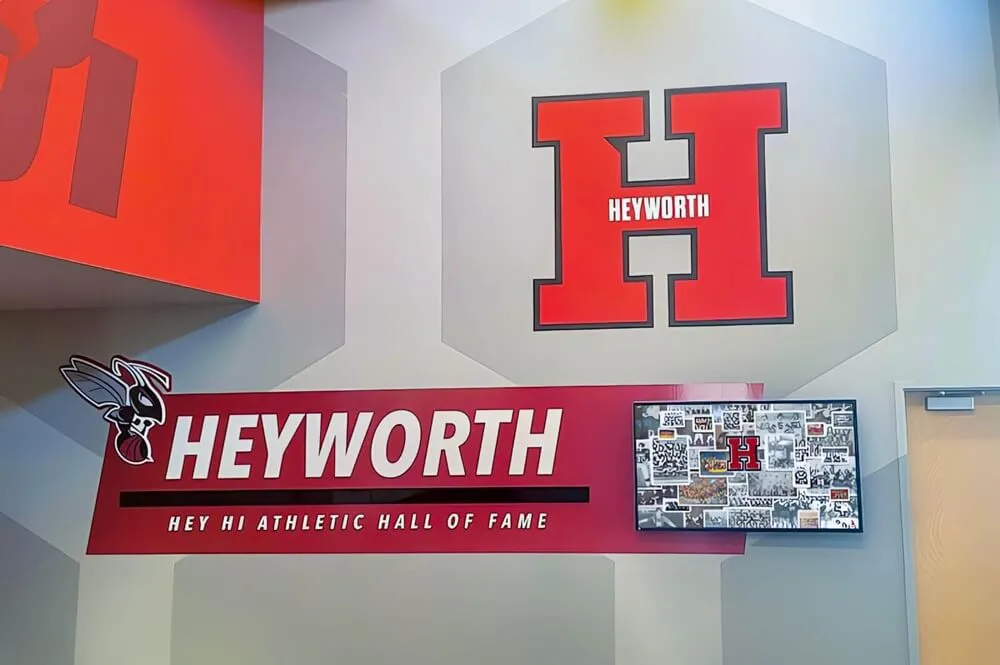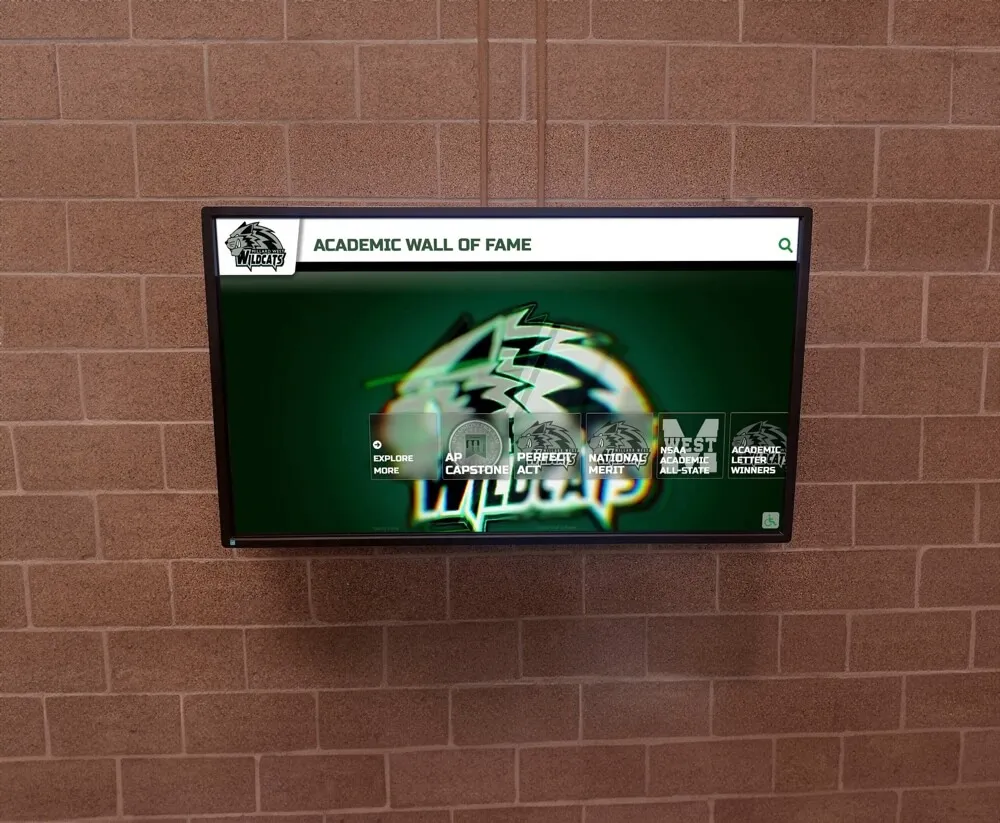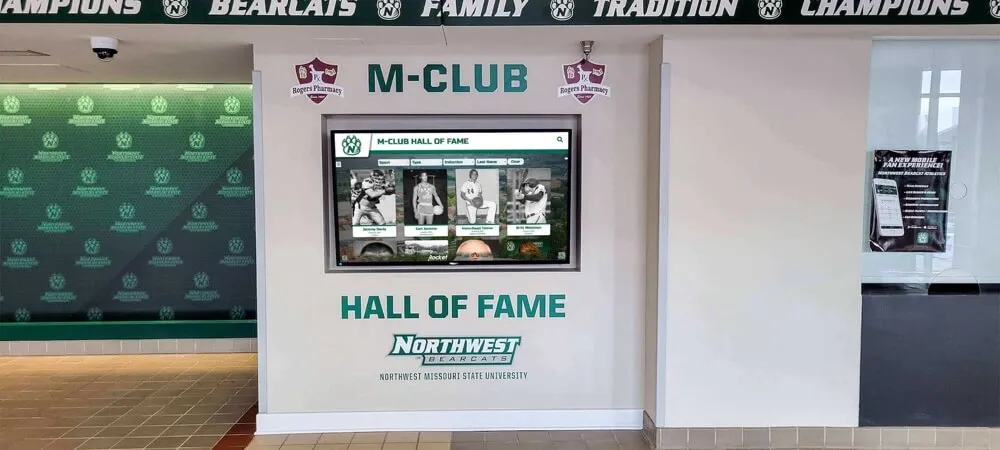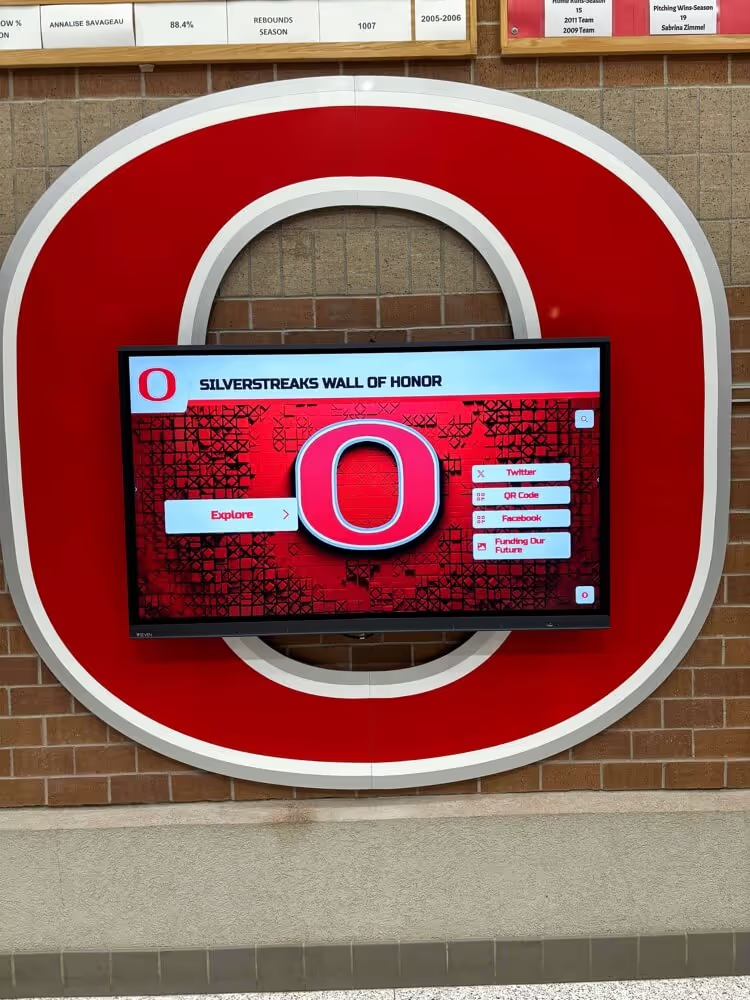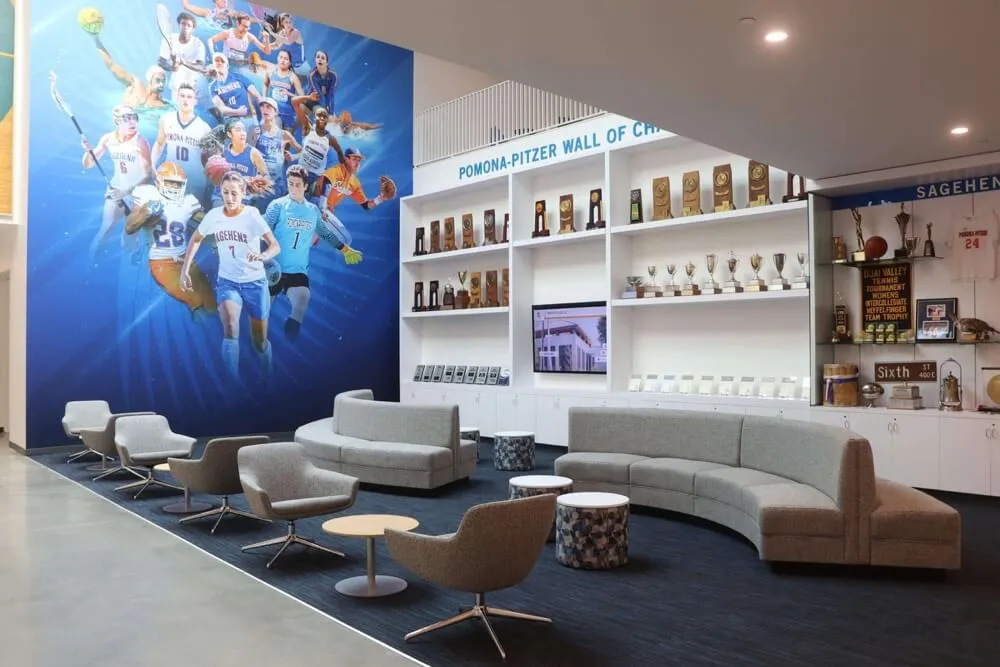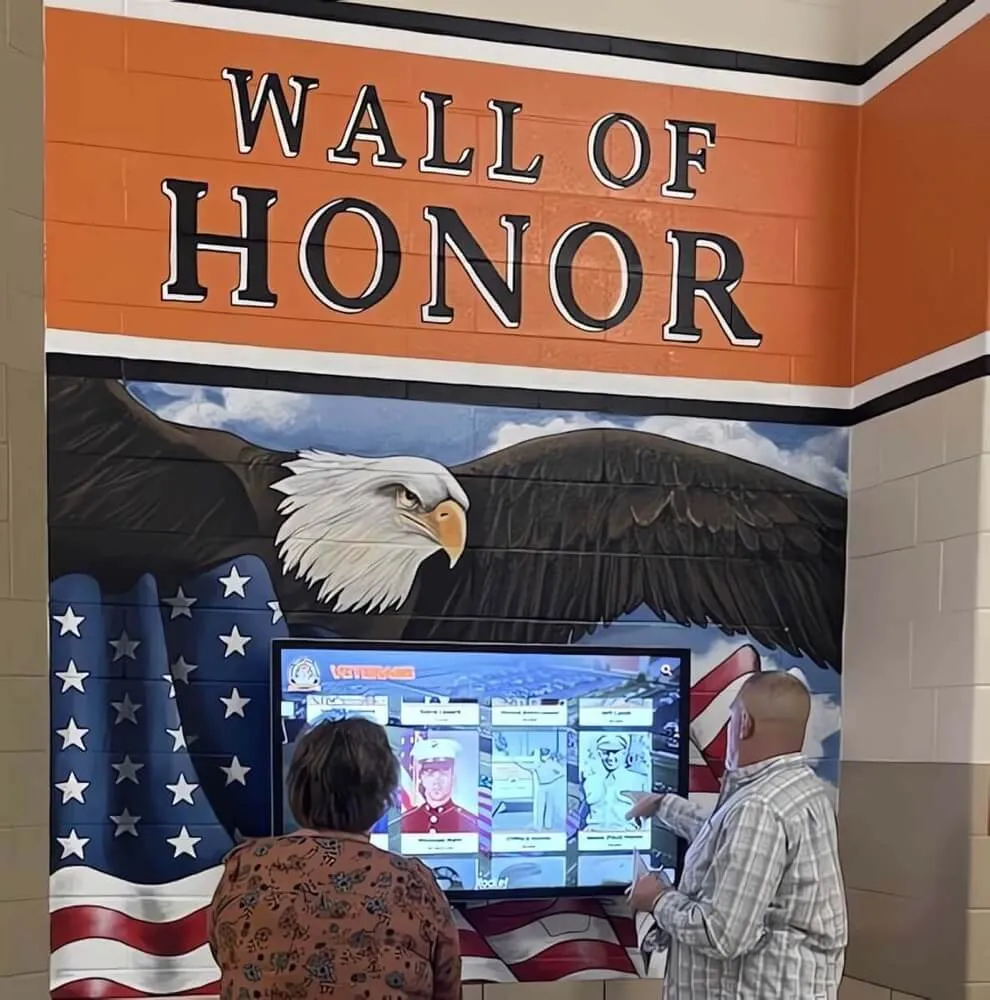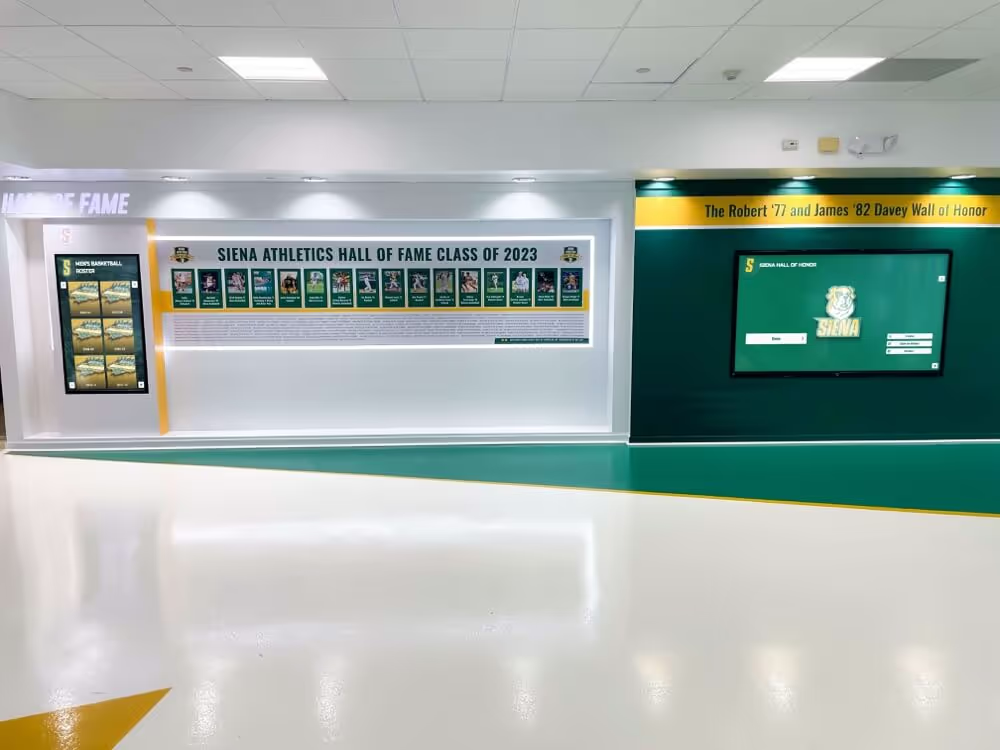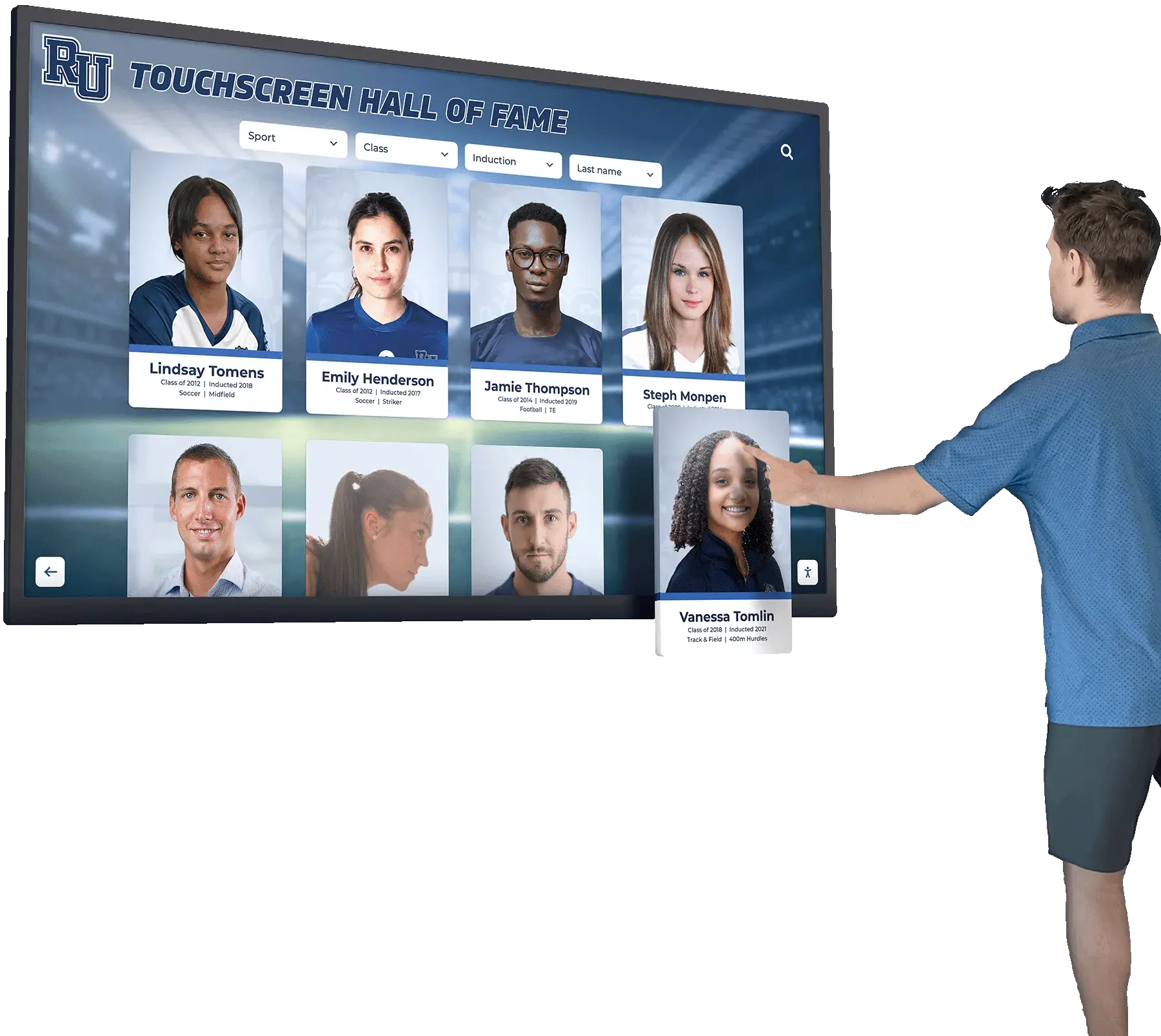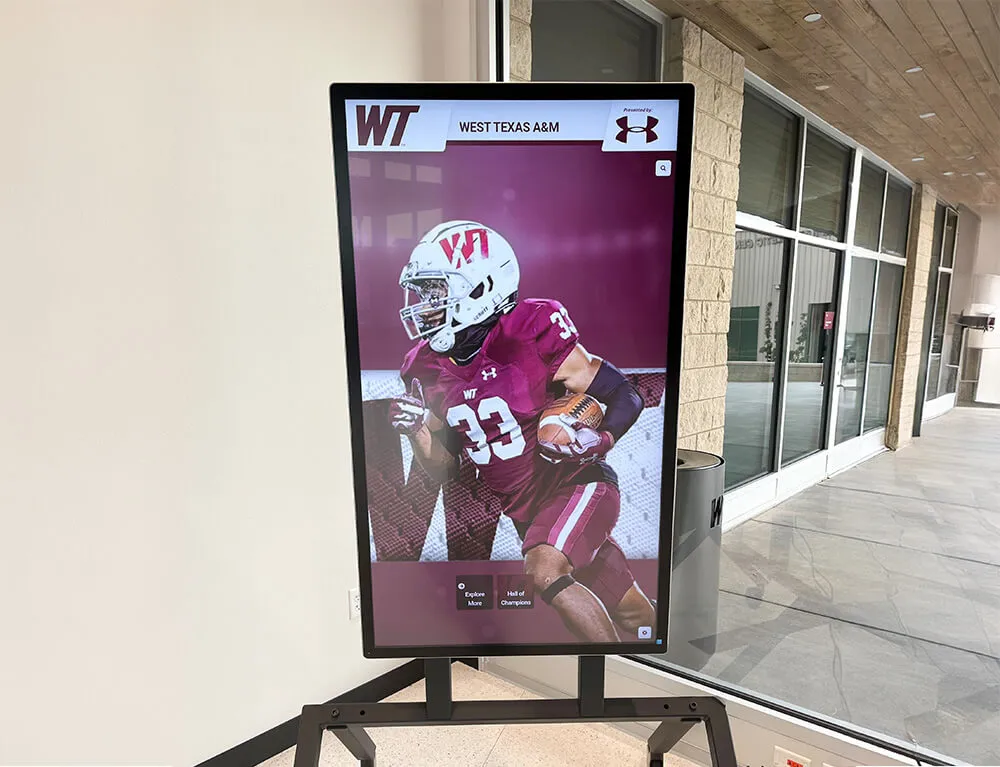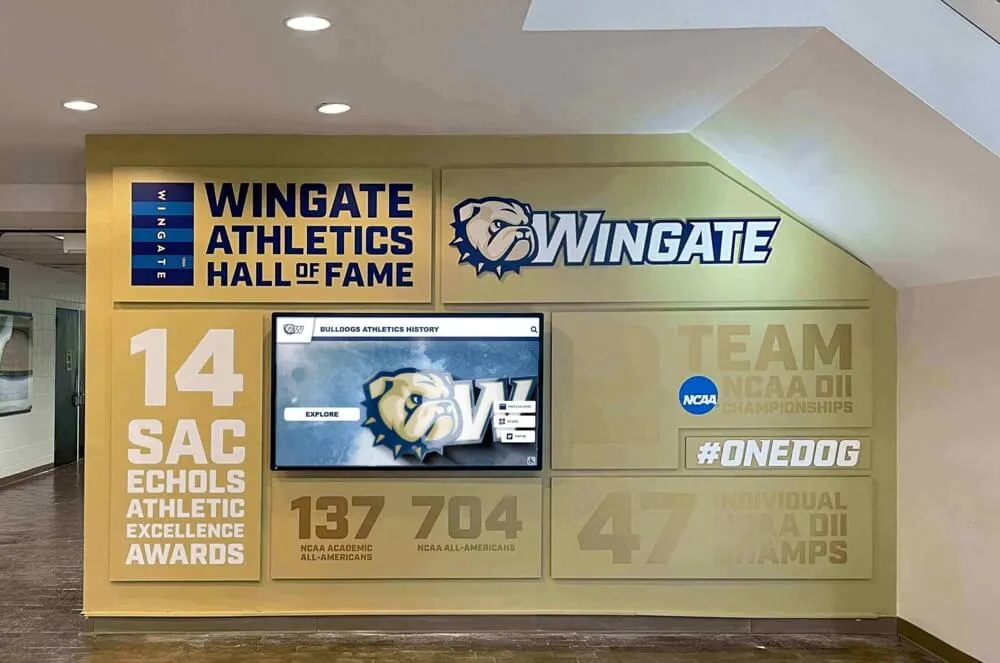Transforming Police Office Recognition with Interactive Touchscreen Kiosks
Police departments across the nation are modernizing how they honor their officers and showcase departmental achievements through innovative touchscreen kiosk technology. Unlike traditional static plaques and bulletin boards, interactive awards walls provide dynamic, engaging displays that celebrate the dedication and heroism of first responders while creating meaningful connections with both officers and the community they serve.
Modern police offices need recognition systems that match the professionalism and technological advancement of today’s law enforcement agencies. Interactive touchscreen kiosks powered by solutions like Rocket Alumni Solutions offer the perfect blend of accessibility, engagement, and comprehensive recognition capabilities that traditional displays simply cannot provide.
This comprehensive guide explores how police departments can implement touchscreen kiosks for awards recognition, the types of awards and recognition programs that benefit from digital display, implementation best practices, and real-world examples of successful installations.
The Evolution of Police Office Recognition Displays
Traditional vs. Digital Recognition Methods
Traditional police office awards displays typically consist of static elements: framed certificates on walls, trophy cases, plaques, and printed honor rolls. While these methods have served departments well for decades, they present several limitations:
- Limited Space: Physical displays require significant wall space and can become cluttered
- Static Content: Information cannot be easily updated or expanded
- Accessibility Issues: Small text and fixed positioning make content difficult to read
- Maintenance Challenges: Dust accumulation, fading, and damage require constant upkeep
- Limited Context: Basic displays provide minimal background information about achievements
Interactive touchscreen kiosks address these limitations while providing enhanced functionality:
- Unlimited Digital Space: Store thousands of awards, photos, and videos without physical constraints
- Dynamic Updates: Add new recognitions instantly through cloud-based management
- Enhanced Accessibility: Adjustable text size, audio descriptions, and multilingual support
- Rich Media Integration: Include videos, audio recordings, and detailed biographical information
- Interactive Exploration: Users can search, filter, and explore content at their own pace
Why Police Departments Are Adopting Digital Recognition
According to research from the International Association of Chiefs of Police (IACP), departments using digital recognition systems report:
- 40% increase in officer engagement with recognition programs
- 60% improvement in community awareness of officer achievements
- 75% reduction in display maintenance time and costs
- Enhanced professional appearance of office spaces
Types of First Responder Recognition Ideal for Digital Display
Police departments recognize officers and staff through numerous award programs, each suitable for interactive touchscreen display:
Individual Officer Awards
Valor and Heroism Awards
- Medal of Valor: Recognizing exceptional courage in life-threatening situations
- Shield of Valor Award: Honoring bravery beyond the call of duty
- Purple Heart Award: Commemorating officers injured in the line of duty
- Life Saving Award: Celebrating successful rescue and medical interventions
Service Excellence Recognition
- Officer of the Year: Annual recognition for outstanding overall performance
- Detective of the Year: Honoring investigative excellence
- Community Service Award: Recognizing positive community engagement
- Distinguished Service Award: Celebrating career-long exceptional service
Professional Achievement Awards
- Meritorious Service Award: Recognizing significant contributions to department operations
- Training Excellence Award: Honoring commitment to professional development
- Innovation Award: Celebrating creative problem-solving and process improvement
- Leadership Excellence Award: Recognizing supervisory and mentoring achievements
Team and Unit Recognition
Specialized Unit Awards
- SWAT Team Recognition: Celebrating tactical team achievements
- K-9 Unit Awards: Honoring canine officers and handlers
- Traffic Unit Excellence: Recognizing highway safety contributions
- Detective Division Awards: Celebrating investigative team successes
Collaborative Achievement Awards
- Inter-agency Cooperation Award: Recognizing successful multi-department operations
- Community Partnership Award: Celebrating civilian-police collaboration
- Task Force Achievement: Honoring specialized operation successes
- Crisis Response Team Recognition: Celebrating emergency response excellence
Length of Service and Milestone Recognition
Service Milestone Awards
- 5, 10, 15, 20+ Year Service Awards
- Retirement Recognition
- Career Achievement Honors
- Department Loyalty Awards
Special Occasion Recognition
- Academy Graduation Recognition
- Promotion Celebrations
- Professional Certification Achievements
- Educational Milestone Honors
Interactive Features That Enhance Police Awards Displays
Comprehensive Officer Profiles
Modern touchscreen kiosks can display detailed officer information:
- Complete Service History: Track career progression, assignments, and achievements
- Award Narratives: Full descriptions of circumstances leading to recognition
- Photo Galleries: Professional portraits, ceremony photos, and action shots
- Video Testimonials: Messages from colleagues, supervisors, and community members
- Career Statistics: Quantified contributions and performance metrics
Searchable Award Database
Interactive capabilities allow users to:
- Search by Officer Name: Quickly locate specific individuals
- Filter by Award Type: Focus on particular categories of recognition
- Browse by Date Range: Explore historical awards and recent achievements
- View Department Statistics: See overall recognition trends and patterns
- Access Award Criteria: Understand requirements for different honors
Multimedia Integration
Rich media capabilities include:
- Award Ceremony Videos: Record and display recognition events
- Training Footage: Show officers in action during exercises
- Community Events: Document positive police-community interactions
- Historical Archives: Preserve department history and traditions
- Audio Narratives: Include spoken testimonials and award descriptions
Implementation Best Practices for Police Office Touchscreen Kiosks
Strategic Placement and Design
High-Traffic Location Selection
- Position kiosks in lobby areas where visitors naturally gather
- Ensure clear sight lines and adequate space for interaction
- Consider lighting conditions and screen visibility
- Plan for ADA compliance and accessibility requirements
- Allow for both standing and seated user interaction
Professional Appearance Standards
- Select hardware that matches department aesthetics
- Choose appropriate screen sizes for viewing distance
- Implement consistent branding and color schemes
- Ensure professional mounting and cable management
- Plan for secure installation in law enforcement environment
Content Organization and Structure
Intuitive Navigation Design
- Create clear menu structures that match user expectations
- Implement consistent navigation patterns throughout the system
- Provide multiple pathways to access the same information
- Include search functionality for quick access
- Design for users of all technical skill levels
Comprehensive Award Categories
- Organize awards by type, date, and significance level
- Create logical groupings that reflect department structure
- Implement consistent formatting for all award entries
- Provide context and background for each recognition type
- Include award criteria and nomination processes
Security and Privacy Considerations
Information Security Protocols
- Implement appropriate access controls for sensitive information
- Ensure compliance with law enforcement privacy requirements
- Protect personal information while maintaining transparency
- Create backup systems for critical recognition data
- Plan for system security updates and monitoring
Content Approval Processes
- Establish clear guidelines for what information is displayed
- Implement review processes for new award entries
- Create protocols for updating or removing content
- Ensure accuracy of all displayed information
- Maintain consistency with department policies
Technical Requirements and Specifications
Hardware Considerations
Display Technology Options
- Screen Size: 32" to 55" displays optimal for police office environments
- Resolution: 4K capability for crisp text and image display
- Touch Technology: Capacitive touch for responsive interaction
- Durability: Commercial-grade displays designed for continuous operation
- Connectivity: Wi-Fi and ethernet options for reliable internet connection
Mounting and Installation
- Wall Mount Solutions: Secure mounting systems suitable for law enforcement facilities
- Kiosk Stands: Freestanding options for flexible placement
- Cable Management: Professional installation with concealed wiring
- Security Features: Tamper-resistant mounting and access controls
- Environmental Considerations: Temperature and humidity appropriate operation
Software Platform Requirements
Cloud-Based Management System Solutions like Rocket Alumni Solutions provide:
- Easy Content Updates: Web-based interface for adding new awards and information
- Remote Management: Update displays from any internet-connected device
- Multi-Location Support: Manage multiple kiosks from a centralized platform
- User Analytics: Track interaction patterns and popular content
- Automatic Backups: Secure cloud storage with data redundancy
Integration Capabilities
- Database Connectivity: Link with existing HR and award tracking systems
- Media Library Management: Organize photos, videos, and documents
- Custom Branding: Incorporate department logos, colors, and styling
- Multi-Language Support: Serve diverse community populations
- Mobile Compatibility: Extend access through smartphone and tablet apps
Cost-Benefit Analysis for Police Department Recognition Systems
Investment Considerations
Initial Setup Costs
- Hardware: $5,000-$15,000 per kiosk depending on size and features
- Software Platform: $200-$500 monthly subscription for cloud-based solutions
- Installation: $1,000-$3,000 for professional mounting and setup
- Content Creation: $2,000-$5,000 for initial award database and media preparation
- Training: $500-$1,500 for staff training on system management
Ongoing Operational Costs
- Software Subscriptions: Monthly platform fees
- Content Updates: Staff time for adding new awards and information
- Maintenance: Periodic hardware cleaning and software updates
- Technical Support: Platform support and troubleshooting assistance
Return on Investment Benefits
Operational Efficiency Gains
- Reduced maintenance time compared to traditional displays
- Streamlined award ceremony preparation and documentation
- Automated content backup and archival systems
- Decreased physical storage requirements for certificates and photos
Community Relations Enhancement
- Increased public awareness of officer achievements
- Professional appearance improvement in public spaces
- Enhanced transparency in recognition processes
- Improved community trust through visible accountability
Officer Morale and Engagement
- Greater visibility for individual achievements
- Enhanced pride in departmental recognition
- Improved retention through visible appreciation
- Increased participation in award nomination processes
Case Studies: Successful Police Office Touchscreen Implementations
Metropolitan Police Department Recognition Wall
A 500-officer metropolitan police department implemented a comprehensive touchscreen recognition system featuring:
Installation Details
- Three 50" touchscreen displays in lobby, training facility, and headquarters
- Cloud-based content management system
- Integration with existing award tracking database
- Professional video production for award ceremonies
Results Achieved
- 200% increase in public engagement with officer recognition
- 50% reduction in time spent maintaining traditional displays
- Enhanced recruitment effectiveness through visible recognition program
- Improved community relations through increased awareness
County Sheriff’s Office Digital Honor Wall
A county sheriff’s office modernized their recognition program with:
System Features
- Interactive timeline of department history
- Searchable database of over 500 award recipients
- Video testimonials from community members
- Integration with social media sharing capabilities
Impact Measurements
- 75% increase in officer family engagement with recognition events
- Significant improvement in public perception surveys
- Enhanced media coverage of positive police activities
- Increased officer nomination participation
Training and Change Management
Staff Training Requirements
Administrative Personnel Training
- Content management system operation
- Photo and video upload procedures
- Award entry formatting and standards
- System troubleshooting and maintenance
- Security protocols and access management
Officer Engagement Training
- System demonstration and capabilities overview
- Nomination process education
- Community interaction best practices
- Technical support contact information
Change Management Best Practices
Implementation Strategy
- Begin with pilot installation in high-visibility location
- Gather feedback from officers and community members
- Gradually expand system capabilities and content
- Continuously refine based on user experience
- Celebrate early successes and positive feedback
Communication Planning
- Announce new system through internal communications
- Provide demonstrations during roll call and briefings
- Create user guides for common functions
- Establish feedback mechanisms for suggestions and improvements
- Regular updates on system usage and success metrics
Future Trends in Police Recognition Technology
Emerging Technologies
Artificial Intelligence Integration
- Automated content suggestion based on officer achievements
- Natural language processing for award description optimization
- Predictive analytics for recognition program effectiveness
- Voice-activated interaction capabilities
Augmented Reality Features
- Interactive 3D displays of awards and achievements
- Virtual ceremony experiences
- Enhanced photo and video presentation
- Immersive historical timeline exploration
Mobile Integration Expansion
- Smartphone app connectivity for personal achievement tracking
- Push notifications for new awards and recognitions
- Social media integration for community sharing
- Remote access to full recognition database
Advanced Analytics and Reporting
Performance Metrics Tracking
- User engagement measurement and analysis
- Content popularity assessment
- Community interaction pattern identification
- Recognition program effectiveness evaluation
Data-Driven Recognition Insights
- Award distribution analysis across departments and time periods
- Community engagement correlation with recognition visibility
- Officer satisfaction measurement related to recognition programs
- Return on investment calculation for recognition system implementation
Getting Started: Implementation Roadmap
Phase 1: Planning and Assessment (Month 1-2)
Needs Assessment
- Evaluate current recognition practices and limitations
- Identify key stakeholders and decision-makers
- Determine budget parameters and funding sources
- Assess physical space and technical requirements
- Define success metrics and objectives
Vendor Evaluation
- Research touchscreen kiosk solution providers
- Compare features, pricing, and support offerings
- Request demonstrations and references
- Evaluate integration capabilities with existing systems
- Review security and compliance requirements
Phase 2: System Design and Preparation (Month 2-3)
Content Planning
- Inventory existing awards, photos, and recognition materials
- Develop content organization structure and categories
- Plan multimedia content creation and production
- Create style guidelines and formatting standards
- Establish content approval workflows
Technical Preparation
- Finalize hardware specifications and placement locations
- Prepare network infrastructure and connectivity requirements
- Plan installation logistics and security considerations
- Develop user training materials and procedures
- Create system maintenance and support protocols
Phase 3: Installation and Launch (Month 3-4)
System Deployment
- Professional hardware installation and setup
- Software configuration and customization
- Initial content upload and organization
- System testing and quality assurance
- Staff training and orientation sessions
Launch Activities
- Internal announcement and demonstration sessions
- Community introduction and media coverage
- Feedback collection and system optimization
- Performance monitoring and usage analytics
- Ongoing content updates and maintenance establishment
Frequently Asked Questions
What types of awards work best for touchscreen display?
How secure is the information displayed on police recognition kiosks?
Can the system integrate with existing award tracking databases?
What ongoing maintenance is required for police office touchscreen kiosks?
How do touchscreen awards walls improve community relations?
Transform Your Police Office Recognition Program
Interactive touchscreen kiosks represent the future of law enforcement recognition, offering dynamic, engaging ways to honor officer achievements while strengthening community relationships. By implementing modern digital recognition systems powered by solutions like Rocket Alumni Solutions, police departments can create professional, accessible displays that celebrate the dedication and heroism of first responders.
The transition from traditional static displays to interactive touchscreen kiosks requires thoughtful planning and implementation, but the benefits—enhanced officer morale, improved community relations, operational efficiency, and professional appearance—make this investment worthwhile for departments committed to recognizing excellence in law enforcement service.
Ready to modernize your police office awards wall with cutting-edge touchscreen technology? Discover how Rocket Alumni Solutions can transform your recognition program into an engaging, professional display that honors your officers and connects with your community. Contact our team today to explore the possibilities and see how departments nationwide are revolutionizing their recognition practices with interactive digital displays.
For more recognition solutions and ideas, explore our articles on Digital Service Awards, Staff Recognition Scoreboard, and Interactive Hall of Fame to see how digital recognition technology is transforming organizations across all sectors.




